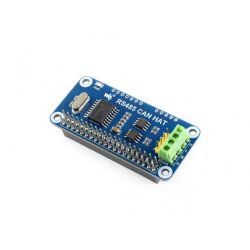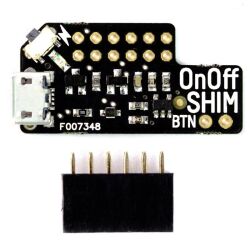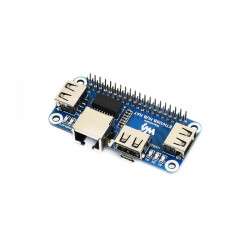Beschreibung
Power your Pi with a wide range of input voltages from 3 to 16V!
Wide Input SHIM lets you use a range of different power supplies with your Pi, including the ubiquitous 12V barrel jack power supplies. It's super-skinny, so you can solder it straight to your Pi's pins and still use HATs and pHATs on top.
The barrel jack connector on Wide Input SHIM is a 3.5mm outer diameter (OD), 1.3mm inner diameter one, and there's a short male to female adapter cable included to allow you to use the common 5.5mm OD barrel jacks too.
There's also a short cable included with a 3.5mm OD barrel jack on one end and tinned wires on the other, in case you want to attach it directly to something like a bench power supply or to solder it into a project.
If you need a longer power cable, then there's a 1.5m long 3.5mm OD male to tinned wires cable available separately.
Kit includes
- Wide Input SHIM
- 2x6 female header (requires soldering)
- 3.5mm OD male to 5.5mm OD female adapter cable (15cm long)
- 3.5mm OD male to tinned wires cable (15cm long)
Features
- Super-small SHIM-format board
- 0.8mm thick PCB
- Can be used with HATs and pHATs
- 3.5mm outer diameter barrel jack connector (centre positive)
- Adapter cables included
- TPS63070 buck-boost converter chip (data sheet)
- 5V / up to 2A output
- 3-16V input
- Reverse voltage protection
- EN (enable) pin to switch off output voltage (pull to ground)
- Requires soldering
Usage
You can supply a range input voltages to Wide Input SHIM, either through the centre positive 3.5mm outer diameter barrel jack connector, or through the two broken-out + and - pins on the SHIM.
The board will provide 5V/2A output (through the GPIO to the Pi) at input voltages of 5V to 16V. Current drops to 1.5A at 4V, and 1A at 3V.
Pulling the EN (enable) pin to ground will cut the 5V voltage output, although it should be noted that you should shut your Pi down cleanly before doing this!
Notes
- Dimensions: 45x17x6mm (LxBxH)
- Using both micro-USB power and Wide Input SHIM power at the same time is not recommended with Pi Zero / W where there is no protection against back-powering

















